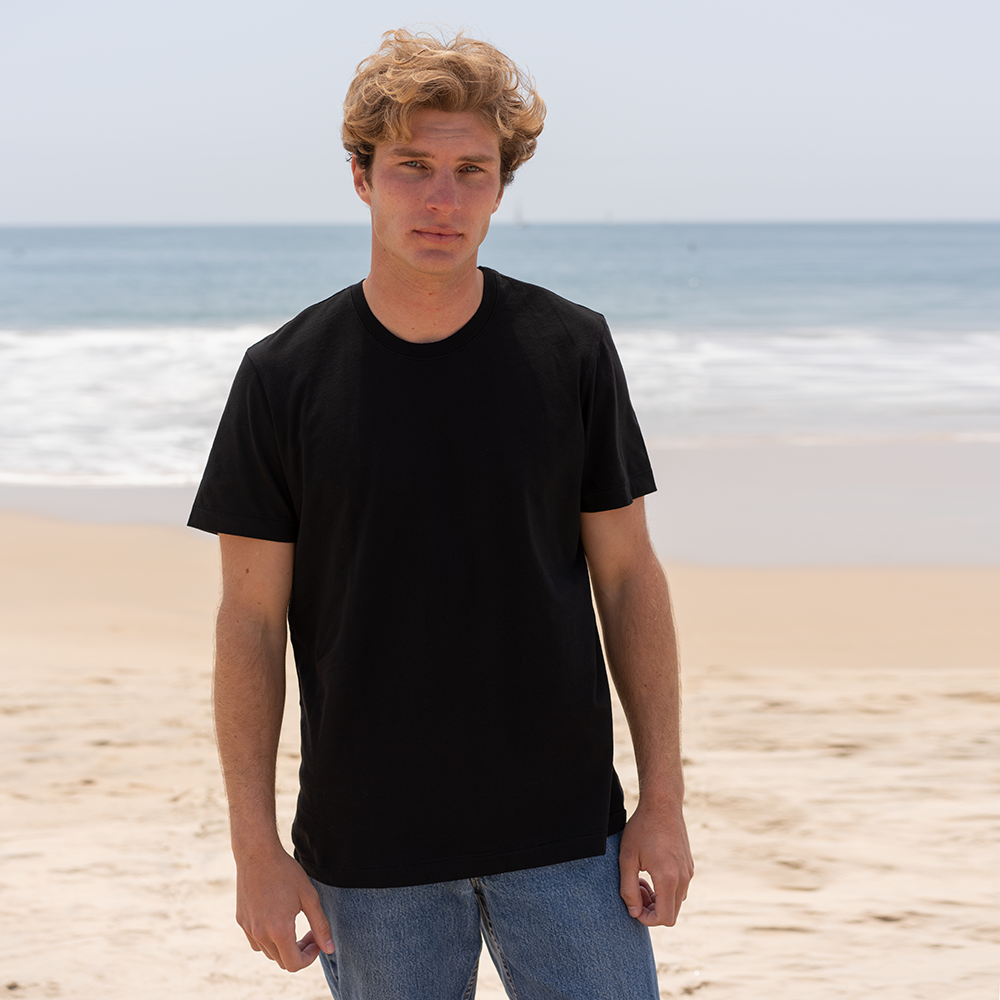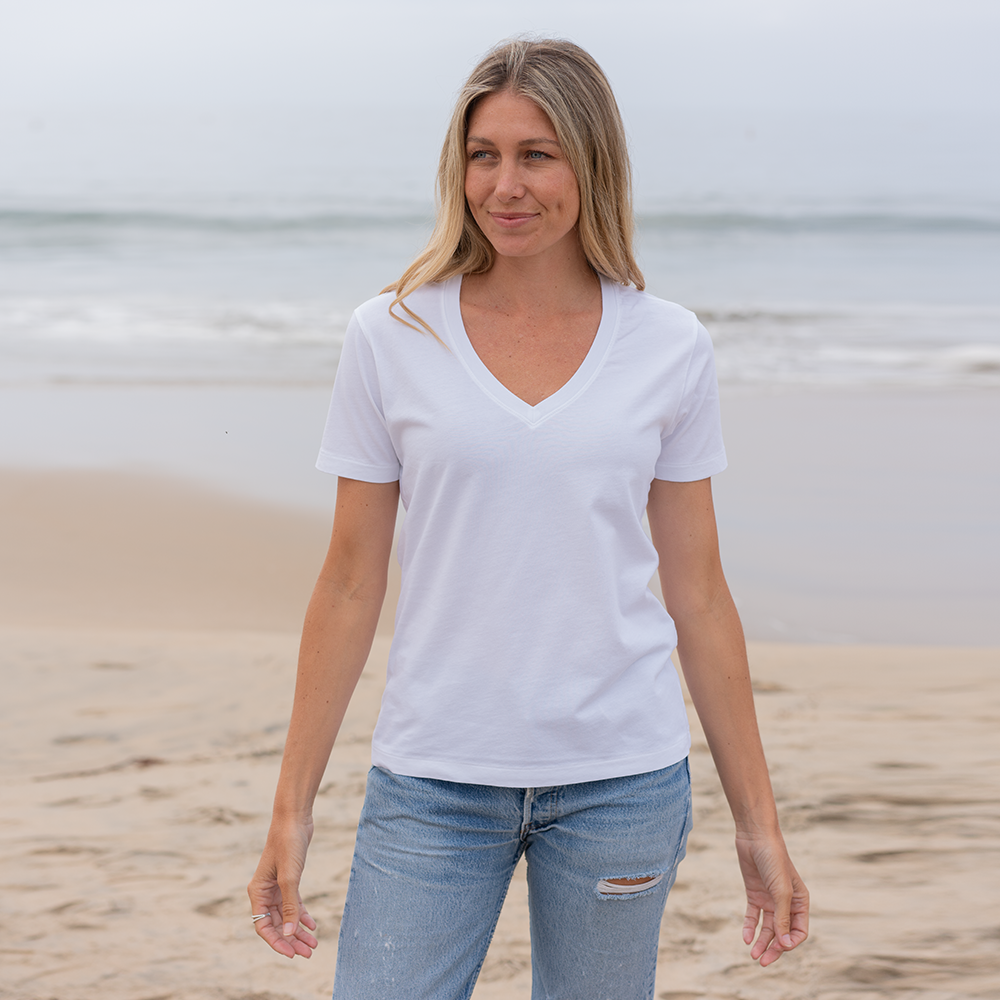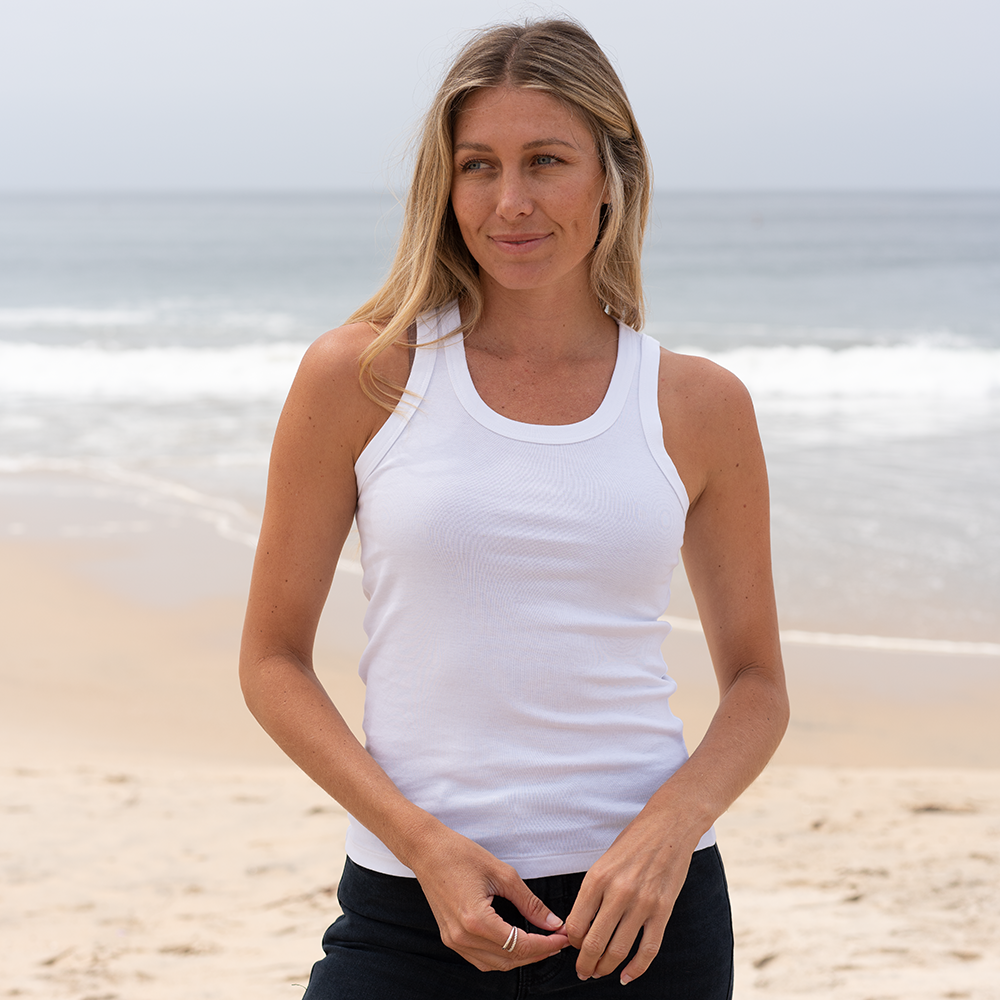
Dressed for change: how & why of sustainable T-shirts in 2025
Sustainable T-shirts could be the key to unlocking a better future.
In recent years the notion of fast fashion has been making headlines around the world, with the fashion industry falling into the environmental spotlight. And not for any reasons to be proud of.
Textile dyeing is the second largest polluter of clean water globally, next to agriculture. This is in large why fast fashion is one of the most environmentally harmful industries in the world. From how fabrics are produced to how clothing is transported and sold, the destructive impact of fast fashion has snowballed along with the scale of production. Why is fast fashion so destructive, and how can we make a difference with sustainable T-shirts?
the best t-shirts for men
FOR MEN
What Is Fast Fashion?
Fast fashion is when stores continually release new collections inspired by fashion icons, trends, or celebrity styles, and make these items available to consumers at low costs. These trends come and go quickly, which creates pressure for retailers to constantly make room for the latest inventory. It also puts pressure on consumers to throw out wearable clothes to be replaced by new ones. It also puts pressure on manufacturers to produce more clothing and faster. It also puts pressure on farmers to grow more cotton and faster. And it puts pressure on all of us to do something about this growing problem.
That’s a lot of pressure.
Fast fashion comes at a price, not just buyer’s remorse for the things you bought on a shopping spree and only wore once. There are negative environmental impacts of fast fashion no matter what you buy.
Related: Why wear organic cotton T-shirts?

Then there are the human costs of the industry. Most of the world's clothing, including fast fashion from well-known brands, is still made in developing countries with low or no health and safety measures. There have been countless reports of fatal factory conditions, and on average the industry has 5.6 injuries per 100 workers per year. In one instance, the infamous Rana Plaza Disaster of 2013, a factory in Bangladesh collapsed, killing more than a thousand people.
More than 14 million people ( more than half the global fashion industry workforce) are paid less than half of what is considered a living wage.
But this is just the tip of the fast fashion iceberg. The problem is too big to cover in one article--one blog--maybe even in one generation. That’s why our mission is all about the solution for ourselves and for future generations. Breaking the fast fashion cycle doesn’t mean refusing to ever buy clothes again. In fact, it doesn’t even mean giving up luxury.
Breaking this cycle starts with investing in a new one--a sustainable cycle built on sustainable luxury T-shirts.
the best t-shirts for sale
FOR WOMEN
WHAT ARE SUSTAINABLE COTTON T-SHIRTS?
A lot of people assume there can’t be that much of a difference between a sustainable cotton T-shirts and a “normal” T-shirts. After all, the T-shirt is so common, so unassuming, so classic, it’s often overlooked as a fashion fundamental. It turns out, there is a big difference between normal T-shirts and sustainable T-shirts. Let’s look at some of the key factors:
TOXICITY
According to Green America, over 8,000 chemicals are used to turn raw materials into textiles. The fashion industry uses around 43 million tons of chemicals to dye and treat our clothing, and the World Health Organization estimates that 20% of industrial water pollution comes from textile manufacturing, which releases dyes and other chemicals into waterways in manufacturing countries.
These same chemicals get on our skin.
Impakter reports that these chemicals can have physical, developmental, and hormonal impacts on humans. Chemicals fabrics are treated with in order to prevent mold, pathogens, and combustion for example are being found in the blood of humans. It is reported that American children now have among the highest levels of flame retardants in their blood.
Are these chemicals dangerous? Are these chemicals bad? We’re still learning about the negative effects of being exposed to these chemicals and what risks they can pose. It’s not yet clear what ailments they cause, but one thing everyone can get behind is that it’s probably safer not to be exposed to them at this level.
By purchasing a sustainably produced T-shirt, you cut out all of these toxins from the production line, the packaging, and of course your body.
RESOURCE USAGE
T-shirts, along with most other clothes in the fashion industry, are made from cotton. In fact, 40% of our clothing has cotton in it. Technically cotton is a renewable resource, which is what gives cotton the potential to be sustainable. But growing cotton creates a lot of challenges with resource management.
Land
All plants need fertile soil to grow in, and some areas naturally have more fertile soil than others. In nature, when plants and other living things die, their bodies decompose and nutrients are recycled into the soil. But in agriculture when crops are harvested, nothing is left behind except the soil and whatever nutrients the plants didn’t consume. Eventually, the soil becomes barren, and it’s difficult to grow anything in it.
Fertilizer is a band-aid solution to the problem. The plants don’t “eat” all of the fertilizer they’re given, and then the leftover fertilizer gets washed away by the rain. After a harvest, rain can also wash away whatever nutrients are left in the soil.
These nutrients end up in local rivers and streams where they can harm wildlife by causing algae blooms.
One way to combat this issue is with farming practices like crop rotation, which makes use of the same plot of land for multiple crops throughout the year. Rotating crops helps keep nutrients in the soil and reduces the need to burn down wild habitats for farmland. It also reduces erosion and flooding, as the rooted soil absorbs and retains moisture.
The reason why fast fashion companies tend not to do this may be due to cost. In the short-term it’s faster, easier, and therefore more profitable to pay someone to clear a forest rather than invest in organic farming practices that sustain a smaller operation.
Pest Control
Growing cotton requires a lot of pesticides to prevent crop failure. But the chemicals that are designed to kill insects that eat crops also kill other types of wildlife that entire ecosystems depend on.
Not to mention other crops.
It’s well-known that bees play a vital role in pollination both in nature and in farming, but pesticides are causing bees to die en-masse. We even have a name for it: colony collapse disorder. And yet, industrial cotton continues to buy into pesticides. Although conventional cotton covers 2.5% of the world's farmland but uses 24% of the world's pesticides (herbicides, insecticides, and defoliants) — more than any other crop.
Even if organic farming used the same pesticides, it’s easier to control and contain within a smaller operation. But there are alternatives to poison, such as plant-based insect deterrents and introducing natural predators, such as birds, to eat the pests. These are just two examples of how it is possible to partner with nature to increase crop yield rather than trying to force it.
Water
Cotton naturally requires a lot of water to grow, and this makes growing it industrially a literal drain on natural resources.
Furthermore, many developing nations lack sufficient investment in good irrigation systems, making them at risk of drought. Since 1950 the Aral Sea has lost 90% of its volume, primarily due to cotton production. Shipwrecks now sit in an open desert that stretches for miles where there used to be water, full of life. Today there are many villages that look like abandoned mining towns, but they used to be fishing villages.
We can’t afford to let this happen to our entire planet.
Like plants, water is a sustainable resource. But using resources faster than we can replace them makes them unsustainable. Organic cotton operations don’t just use less water because of their size of the operation, but thanks to efficiency. As a result, organic cotton uses around 70% less water, easing the strain on local ecosystems.
While it might be cheaper and faster in the short-run to drain a natural body of water for cotton production, there are efficient and cost-effective solutions such as drip irrigation. Originally invented in Israel by farmers who were trying to grow crops in the barren Negev desert, drip irrigation not only helped conserve water in the short-term, it led to more fertile soil in the long run. Believe it or not, over time, the Negev desert has been shrinking--overtaken by green fields.
We can be the change we want to see in the world.
Related: Start Your Sustainable Wardrobe
Profitability
It’s no secret that sustainability doesn’t fit in well with a mass-production business model like fast fashion. These models are designed to reduce costs to the company, which often leads to the sorts of exploitative practices outlined above. A common justification is that sustainability isn’t profitable. That’s a myth.
It’s a myth that sustainability isn’t profitable: The Classic T-shirt Company is living proof of that.
Of course, sustainability doesn’t come without challenges, but we are growing a community that’s ready to meet those challenges by making a simple shift in mindset:
Quality over quantity.
In the long-run, the Classic T-shirt Company’s customers save money over time by reducing the cost-per-wear of every Classic T-shirt they invest in. By going for organic instead of conventional cotton, you are cutting out almost all the herbicides and pesticides.
HUMAN DIGNITY
The issues mentioned above are not limited to the environment. Food and water supplies can easily become contaminated by agricultural runoff. And nobody is more exposed to the harmful chemicals than the people who work directly with them--and not always with proper protective gear or knowledge of how harmful chemical exposure can be.
But even if the workers in fast fashion are aware of the risks, what other options does the industry leave? When the land gets turned into cotton fields and factories, the lakes and rivers dry up, all the forests are cut down, opportunities for work are scarce. The only options for many people are limited to field and factory--pick your poison.
The alternative is simple: pay people a fair wage. Don’t make them work in unsafe conditions. Make something that everyone can be proud of.

DRIVING SUSTAINABLE DEVELOPMENT ONE ORGANIC COTTON T-SHIRT AT A TIME
Let’s look at some numbers about organic cotton. In 2014, sustainable T-shirt production saved more than 200 billion liters of water, 288.7 million kilowatts of energy (enough to power a 60 watt light bulb for half a million years), and 92,5 million kg of carbon emissions.
That’s a large environmental footprint taken off the earth. And remember, organic cotton is less than 1% of the global cotton production. This means that if we all bought organic, sustainably produced cotton, we would be adding two zeros to all of those numbers. That means 9 billion kilograms of carbon emissions, or 9 million tons. In comparison, the Great Pyramid of Giza weighs 5,7 million tons.
Ultimately, the best thing we can do to affect the industry is to keep our clothing in use for longer by buying quality items — and choosing timeless designs with multiple functionalities. There’s a reason Classic T-shirts always work.
Related: What is sustainable luxury fashion?
BRANDS OF THE FUTURE — GET USED TO SUSTAINABLE T-SHIRTS
In every major fashion metropolis around the world, sustainable fashion is on the rise. Buying quality products from sustainable sources is as much of a fashion statement as it is an ethical choice.
Anyone can buy a low-quality T-shirt made with exploitative labor, but it takes a person of true style to buy something that looks great and takes the environment into account.
We’ll keep doing our part to ensure that you always have the option of purchasing an organic, sustainable T-shirt that fits you to a T. No chemicals, no fleeting trends, just high quality organic cotton, luxury softness that lasts wash after wash after wash. The how of sustainable T-shirts is a story of innovation and meeting challenges, but the why is simple. Sustainable T-shirts are better for the planet, better for humanity, and better for you.
Welcome to the future of fashion: for style inspiration check out our T-shirt guides for men’s T-shirts and women’s T-shirts.










































































